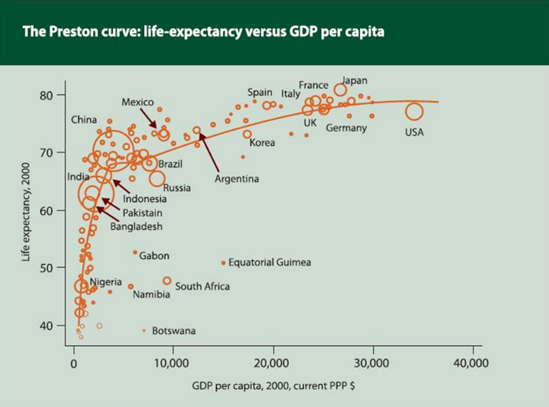PREVIOUS
Preston curve
June 7 , 2024
573 days
1256
0
- The Preston curve refers to a certain empirical relationship that is witnessed between life expectancy and per capita income in a country.
- It was first proposed by American sociologist Samuel H. Preston in 1975.
- He authored a paper titled “The changing relation between mortality and level of economic development”.
- He found that people living in richer countries generally had longer life spans when compared with people living in poorer countries.
- This is likely because people in wealthier countries have better access to healthcare, are better educated, live in cleaner surroundings, enjoy better nutrition etc.
- The average per capita income of Indians rose from around ₹9,000 per year in 1947 to around ₹55,000 per year in 2011.
- During the same period, the average life expectancy of Indians rose from a mere 32 years to over 66 years.
- However, the positive relationship between per capita income and life expectancy begins to flatten out after a certain point.

Leave a Reply
Your Comment is awaiting moderation.


